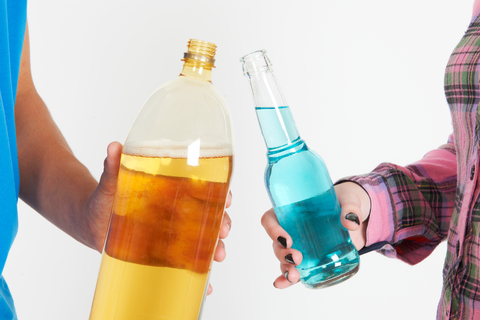Teenage drinking in Scotland has declined dramatically over the past decade, according to new research led by the University of St Andrews.
A World Health Organisation (WHO) report published today (September 26), Adolescent alcohol-related behaviour: trends and inequalities in the WHO European Region, 2002-2014, reveals that since 2002 weekly drinking among 15-year-olds in Scotland has declined from 41 per cent to 11 per cent in girls and from 41 per cent to 14 per cent among boys.
The drop is the second largest drop for girls and fourth largest for boys out of the 36 European countries included in the report. However, despite the reductions the report concludes that levels of alcohol consumption remain dangerously high across Europe and continue to be a major public health concern.
Dr Jo Inchley, Senior Research Fellow in the School of Medicine at the University of St Andrews and Lead Editor of the report, said: “Overall reductions in harmful drinking have been greatest in countries that traditionally have had higher prevalence, such as Great Britain and the Nordic region.
“This makes it clear that change is possible; however, more should be done to ensure that adolescents are effectively protected from the harms caused by alcohol.”
The report identifies a number of possible reasons for the recent declines in alcohol consumption including changes in household income, marketing and prevention approaches, as well as shifts in adult norms and teen culture.
Dr Inchley added: “Studies have shown than young people who are exposed to alcohol marketing are more likely to start drinking at an earlier age and to drink more. We therefore need to implement stricter policies to restrict advertising to young people, alongside other measures which have been shown to be effective, such as taxation, minimum pricing and enforcing age restrictions on the sale of alcohol.”
The report found that boys in Scotland were most likely to report drinking beer (on a weekly basis) at nine per cent, while girls were most likely to drink spirits at seven per cent of those surveyed.
The data used in the study are from the Health Behaviour in School-aged Children (HBSC) study which has collected information on Scottish young people’s health and wellbeing every four years since 1990.
Consumption of spirits by girls in Scotland also dropped significantly from 37 per cent in 2002 to seven per cent in 2014 and in boys from 26 per cent to five per cent.
The report, conducted by a team of European researchers, also showed that a third of Scottish girls and boys have been drunk twice or more in their lifetime – down from around 50 per cent in 2002 but still placing Scotland in the top ten in Europe.
More than a quarter of girls in Scotland (27 per cent) and almost a third of boys (30 per cent) started drinking alcohol at age 13 or younger.
The number of girls drinking one particular kind of alcoholic drink weekly has dropped from 34 per cent to six per cent from 2002, with the number of boys falling from 23 per cent to eight per cent.
The numbers drinking a variety of alcoholic drinks every week has dropped from seven per cent to four per cent among girls, and from 17 per cent to five per cent among boys.
Across Europe, Great Britain and Ireland have seen the largest drops in teenage drinking since the study began in 2002. Now the highest prevalence of regular teenage drinking is found in Southern Mediterranean countries and Central Eastern Europe.
Across the 36 European countries studied in the report, more than one in ten adolescents in the WHO European Regions were regular weekly drinkers by the age of 15.

